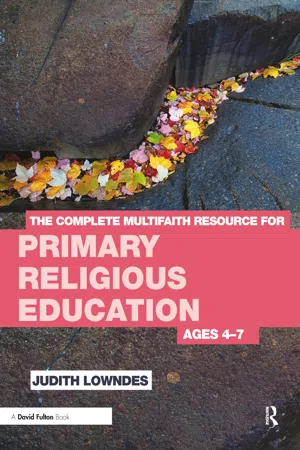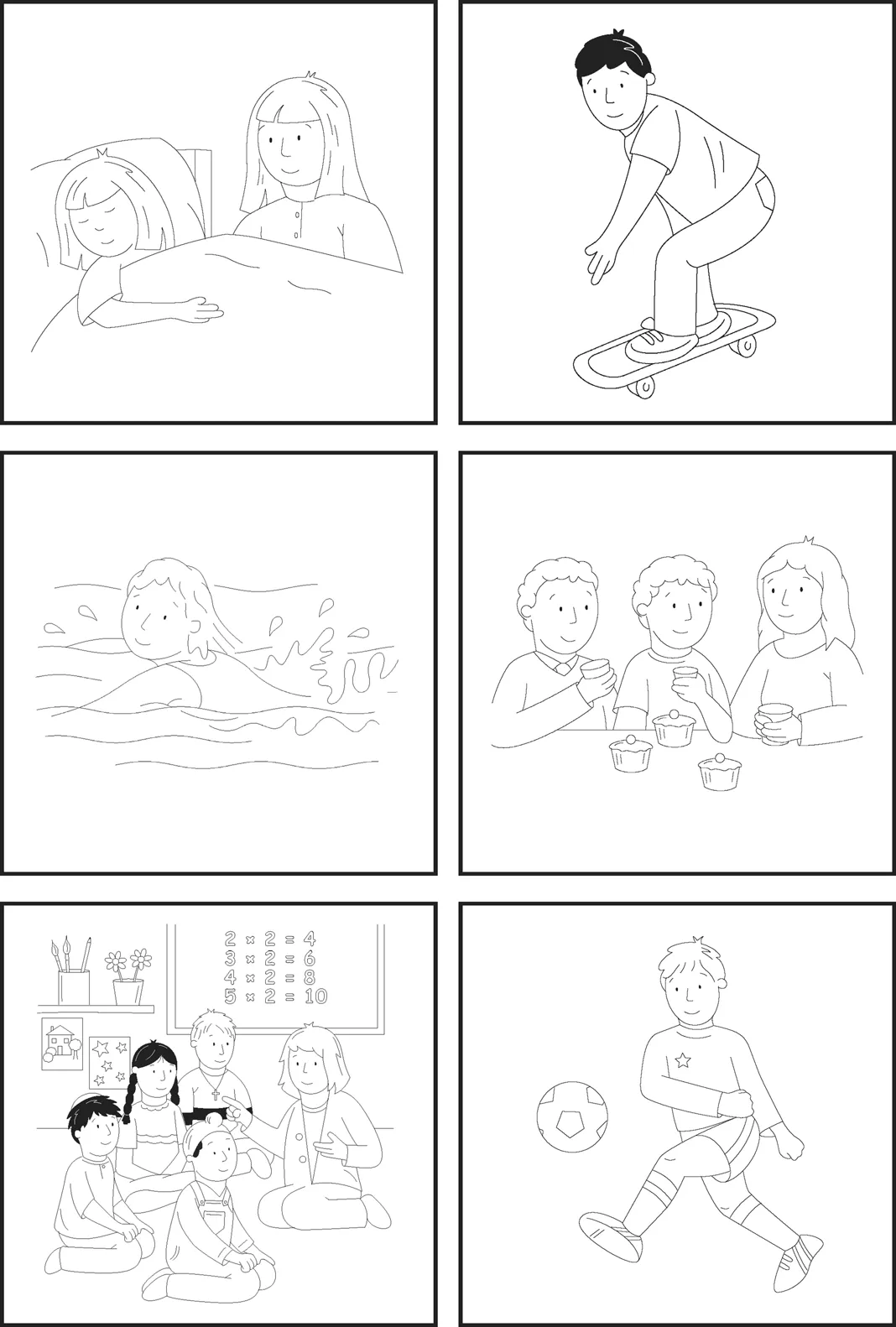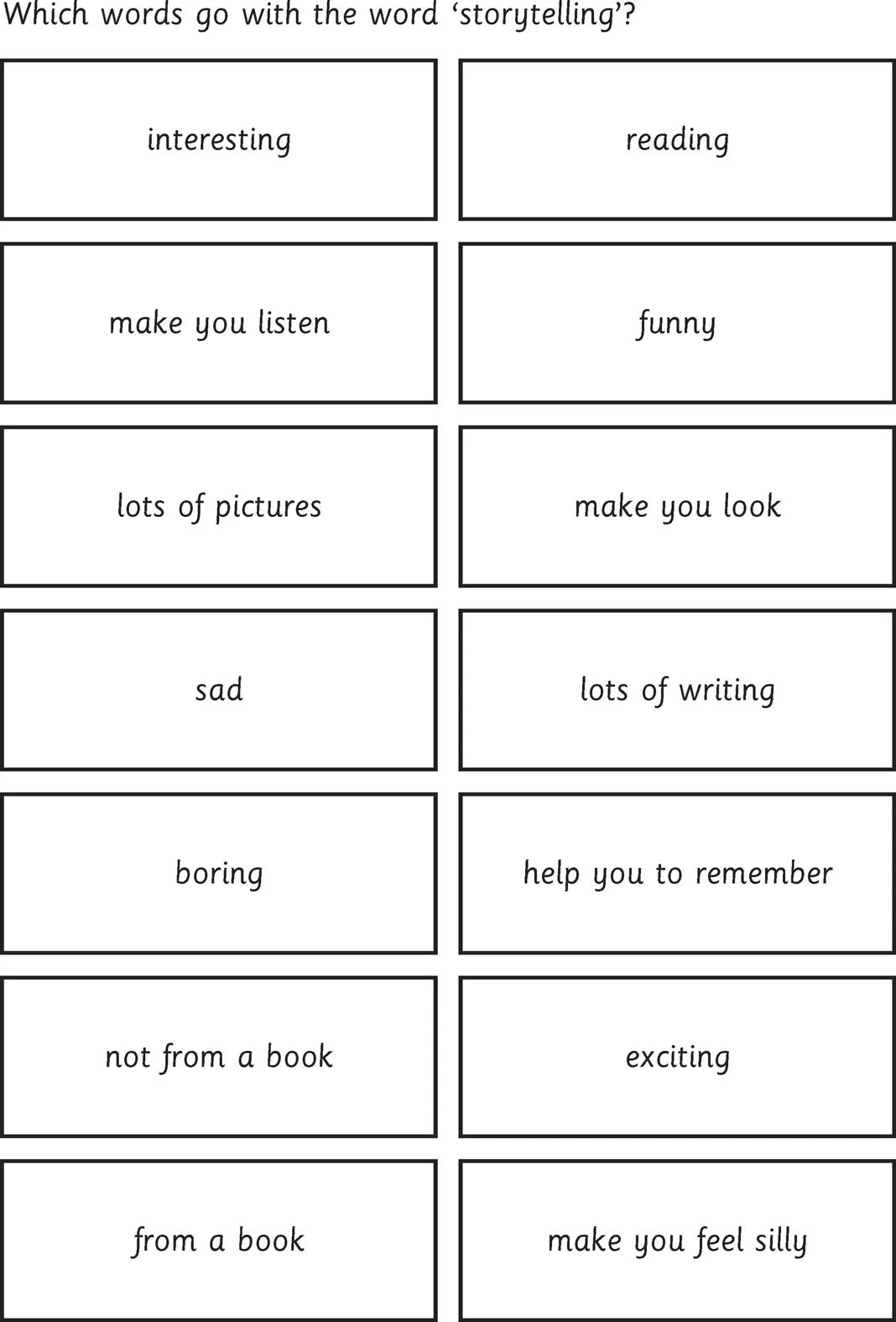
- 138 pages
- English
- ePUB (mobile friendly)
- Available on iOS & Android
About This Book
The Complete Multifaith Resource for Primary Religious Education Ages 4-7 is a definitive teaching and learning aid for cross-religious exploration in the classroom, offering stimulating and detailed ways in which to apply a concepts-based approach to the teaching of RE. It provides a model for learning which engages children and encourages the development of higher order thinking skills and which can be applied to other subject areas in a cross- curricular setting.
Comprising of a book and downloadable resources, The Complete Multifaith Resource features key concepts that underpin religious beliefs and practices and that are key to effective learning in RE for the target age level. Each concept chapter provides a wealth of material which will enable teachers to lead their pupils through the learning experience. Resources can be displayed on an interactive whiteboard for classroom viewing, or alternatively printed out for pupils to use during individual and group activities, requiring no further search for resources. This includes:
- stories, pictures and questions to prompt discussion
- writing frames, sort cards, matching pairs and other engaging activities
This indispensable tool provides a modern, innovative and refreshing approach to teaching RE that has already proved to be effective in a large number of schools and can be applied to the effective delivery of an agreed syllabus for RE. Each chapter is introduced by looking at the key concept from a Christian point of view, and is then examined from the perspectives of the other major world faiths, including Buddhism, Judaism, Islam, Hinduism and Sikhism.
The Complete Multifaith Resource for Primary Religious Education Ages 4-7 will be of value not only to RE managers and leaders, but also to primary phase teachers who may have little confidence or expertise in teaching RE. Trainee teachers and those studying on education courses will also benefit from gaining a better understanding of the concepts-based approach to the teaching of RE as expounded by the Hampshire, Portsmouth and Southampton Agreed Syllabus.
Frequently asked questions
Information
Storytelling

Storytelling in Christianity
Step 1 Communicate
- The teacher reminds the children of some stories they have heard in class. Ask them to decide which they liked and share their choices.
- Send a note home to parents to ask that the children bring in favourite stories to share and discuss. Can the children be storytellers?
- Explain to the class that stories can be in books, on television, on radio or told by people – storytellers. Which way do they prefer to hear a story?
- The teacher wears a storyteller's hat or badge and tells a story, then distributes the story in simple text to be read. Which do the children prefer?
- Do you know anyone who is a storyteller? Can anyone be a storyteller?
- Who is your favourite storyteller? Why?
- How does storytelling make you feel?
- When do you like to listen to a storyteller?
- Have you ever been a storyteller?
- How did that feel?
- The children talk about storytelling in circle time.
- Invite a storyteller into class to tell a story (no book reading!).
- Make a storyteller badge or hat to be worn by the child or adult telling the story.
Step 2 Apply

- Place the six pictures below (also see CD Figure 6.1) on a separate table. The children are given one or two counters. The children can look at all the pictures and then place their counters on the picture or pictures that show when they most like to hear some storytelling. The teacher can count up the ‘votes’ and discuss the children's responses.
- Have a class discussion focussing on the questions below.
- Do you always like listening to storytellers? Why? Why not?
- Would you want to hear a storyteller if you were in the middle of playing on the computer, or out on your bike? Why? Why not?
- Is storytelling a good way of learning? Why? Why not?
- Is it a good way of learning everything? Always?
- Would storytelling help you to learn how to skateboard? Why? Why not?
- Does storytelling always make you feel happy?
- What if the story is very sad?
- What if the storyteller says something you don't want to hear? How do you feel then?
- What if the storyteller told you a story that made you feel silly or angry? What would you do?

Step 3 Enquire

- In pairs or groups the children select words and phrases from the list below (also on CD) that they think ‘go with’ the word ‘storytelling’.
- Compare words as a class and discuss agreements and disagreements.
- Display the final list and add any of the children's own ideas.


Step 4 Contextualise

- The teacher could use a picture of a Christian child (see CD artwork A) or use a Christian persona doll (see page 6), called Joe, for example, to explore this aspect of the learning. The teacher can say, ‘Joe knows about someone who was a very important storyteller. Shall we find out about him?’
- When Joe goes to church with his mum he hears about Jesus. The stories about Jesus are in the Bible, the special book for Christians. Jesus was a very good storyteller and some of the stories he told are in the Bible.
- Joe thinks that Jesus was very clever. He told stories to help people to understand things better.
- Joe really likes the stories. Sometimes his mum tells him some of the stories at home.
- Joe says that Jesus must have been a very good storyteller because hundreds of people used to go and listen to him. His stories made them think hard.
- When Joe goes to Sunday school in the church, the Sunday school teacher tells the children stories that Jesus told. Sometimes they sing songs about the stories and sometimes they draw pictures.


Table of contents
- Front Cover
- The Complete Multifaith Resource for Primary Religious Education
- Acknowledgements
- Title Page
- Copyright
- Contents
- Introduction
- Belonging
- Celebration
- Remembering
- Special
- Authority
- Storytelling